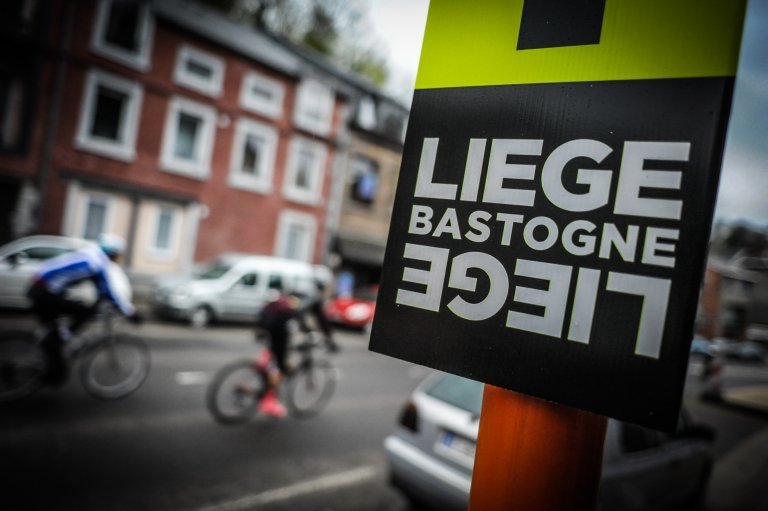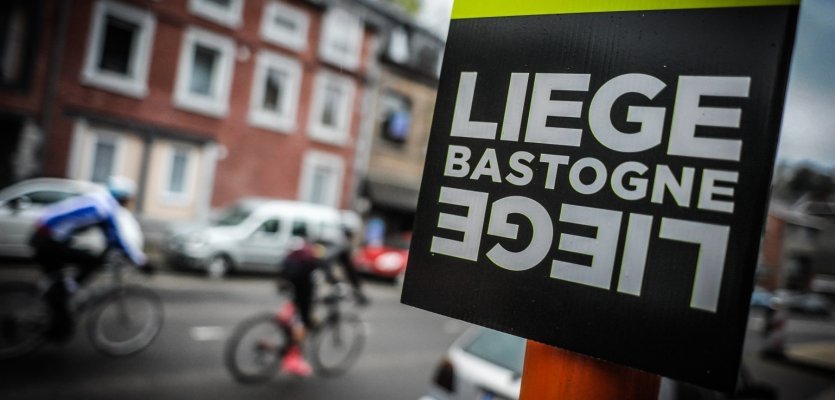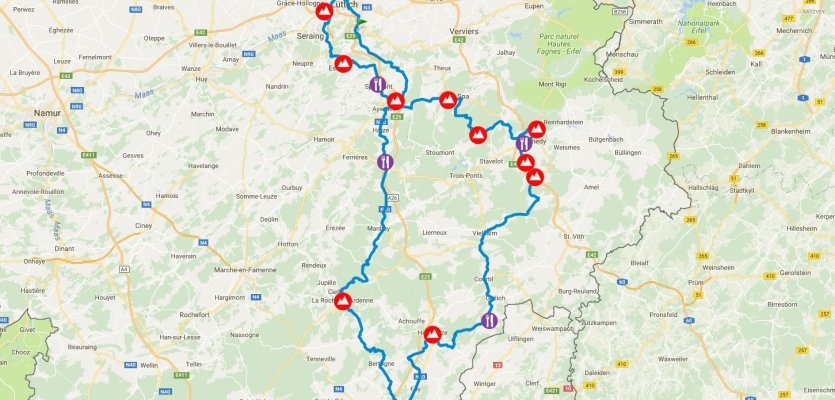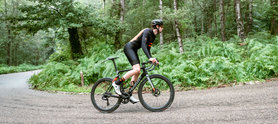
The Liège-Bastogne-Liège Challenge
bike-components’ Christian, Stefan and Björn tackled the famous spring classic course of La Doyenne to find out what it’s like to suffer like the pros.
Liège-Bastogne-Liège, first celebrated in 1892, is the oldest of the so-called five Monuments of the European professional road cycling calendar. Hence, its knick-name “La Doyenne” – “The old Lady”.
La Doyenne – more than 260 Km and 9 rated climbs
In its current form, Liège-Bastogne-Liège has a length of about 260 Km. The race concludes the series of annual spring classics and it is the last one of the three Ardennes races.
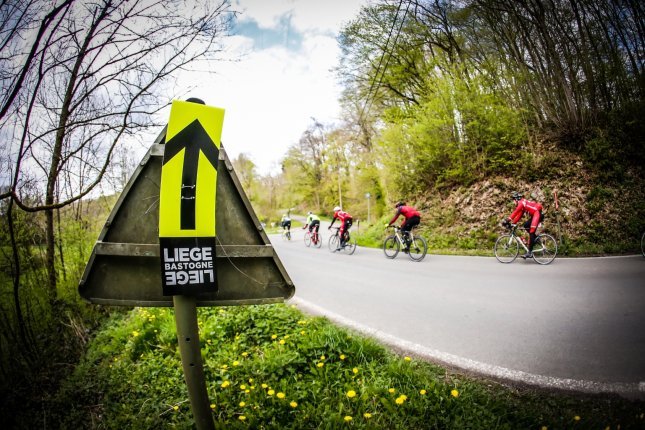
Yellow arrows show the way.
Especially the steep climbs in the second half of the course, in combination with bad weather and cold temperatures, turn the arduous competition into a test of strength and will power. I have been following Liège–Bastogne–Liège for many years, watching the suffering on TV, reading about the heroic battles on the Ardennes climbs in the cycling press and now it was time to give it a shot myself. Together with my co-workers Stefan and Christian, we had registered for the Líege-Bastogne-Líege Challenge and consequently adjusted our training schedules accordingly to prepare for the gruelling Belgian sufferfest.
2017 Liège-Bastogne-Liège Challenge
| Distance | Elevation Change |
|---|---|
| 75 Km | 1184 m |
| 153 km | 2500 m (personal GPS) |
| 273 Km | 4400 m (personal GPS) |
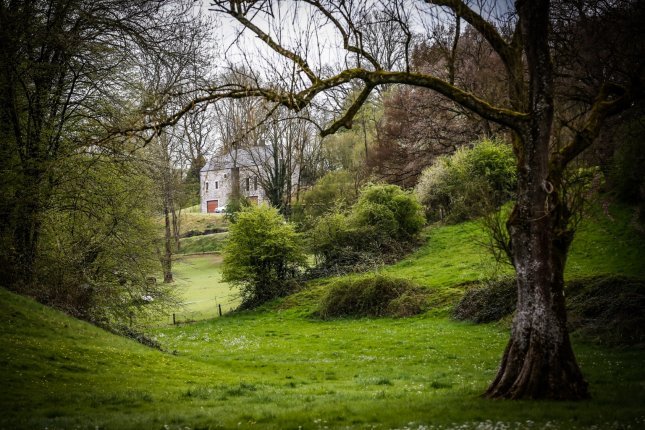
The Ardennes scenery is amazing.
The challenge was held April 22, the day before the actual pro race. At 6.30 am, we were standing at the starting line, bicycles prepared, race numbers pinned to our jerseys and rain gear in our back pocket. The first few kilometres took us, as well as the other 7500 participating riders, through the streets of Liège and then on south towards Bastogne.
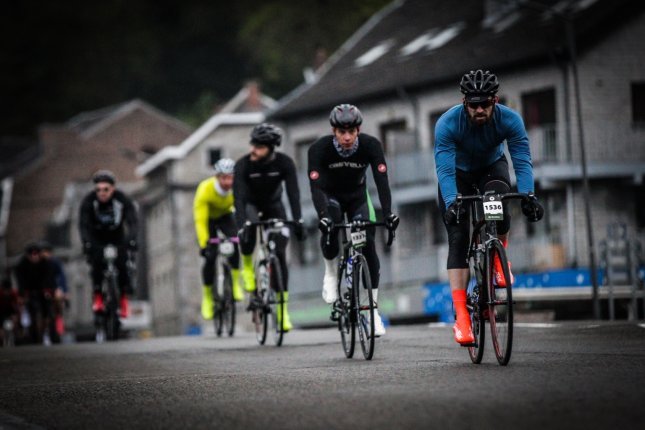
Stefan and Björn on route to Bastogne.
The distance to the first feeding station went by rather quickly as we chatted and enjoyed the hilly Ardennes landscape. There are feed zones every 40-50 Km along the course that come in very handy. We made sure to replenish our food and drink supplies and it was time to break out our rain gear as it started pouring down. Real spring classics conditions!
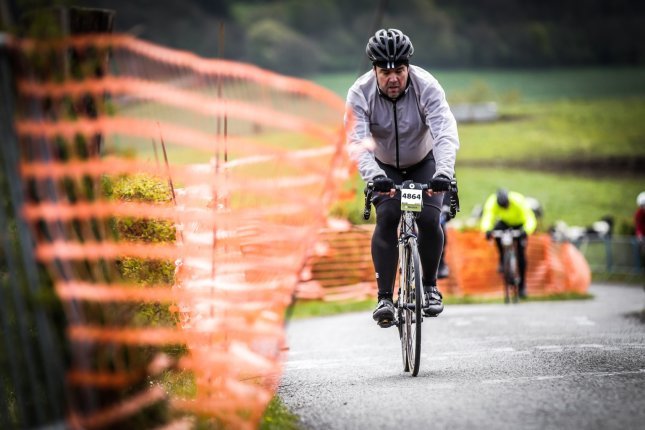
Christian scales Côte de la Redoute.
Soon after the first feeding station, Christian turned off onto the 153 Km loop, while Stefan and I continued on south. The complete first half of the day went by rather quickly, even after the turn-around in Bastogne, one had the feeling of relaxed Sunday outing on the road bike. Until then, the roads were still wide, well-surfaced and the climbs seemed less demanding. Little groups formed, that made drafting easy and even in the rain and at 2° Celsius, the kilometres were literally flying by. However, Stefan and I had separated at some point to go at our own pace. We knew what lied ahead and did not want to risk spending our precious reserves too early by pushing to hard. The self-pacing would surly pay off later.
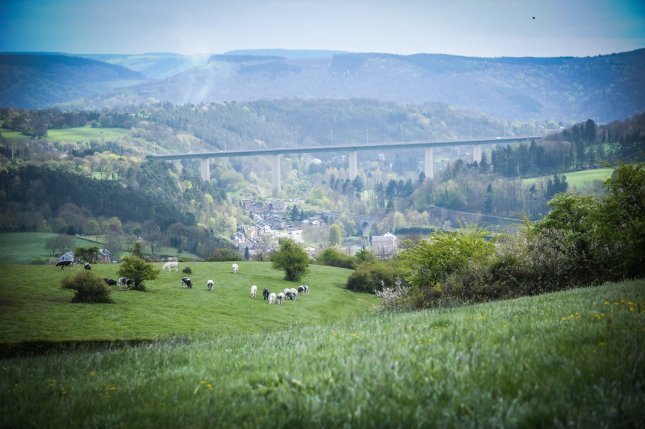
The freeway bridging a valley gives an idea of the Ardennes road bike roller coaster.
At 175 Km, at the Côte de Pont climb, we finally got down to business. At least the rain ebbed off at this point. From now on, every Ardennes ascend evolved into an epic battle. Each climb had its own characteristics. The Côte de la Ferme Libert ups its gradient in several steps, topping out at a gruelling 20%. The Rosier climb was rather comfortable at a steady 5.7% average, but its 4.5 Km length made it seem never-ending.
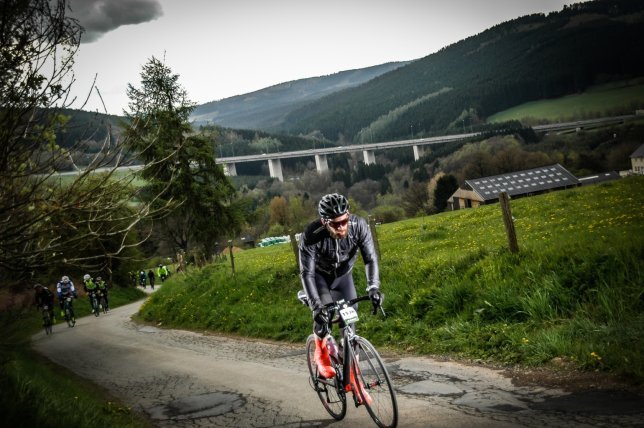
Björn at Côte de Pont.
The famous Côte de la Redoute climb was crowded with spectators in their caravans, already set up for the pro race on following day. The football stadium like atmosphere similar to Alp d’Huez, with loud music and names painted onto the asphalt, made mastering this legendary climb a lot easier. To give you an idea, on race day, the near-by freeway is officially and very pragmatically turned into a parking lot to accommodate for the cycling crazy fans.
The route continued back to Liège and soon the Côte de la Roche-aux-Faucons appeared on the horizon, a steep mean climb through a residential area. Then it was down to the last ascent, the Côte de Saint-Nicolas that leads you through a grim industrial complex before you hit the final kilometres through Liège and on to the finish line in the suburb Ans.

One hell of a profile.
After 11 hours, 273 km and 4400 m of climbing, we were back in Halles des Foires, in Liège, where we had started in the morning. Here I was, I felt proud, completely exhausted and full of joy. The Leffe beer in my hand was more than a hard-earned and very well-tasting reward for the suffering over the 9 rated climbs. My colleague Stefan made it across the line an hour ahead of me and Christian successfully completed the 153 Km loop with 2,500 meters of climbing. What a day!
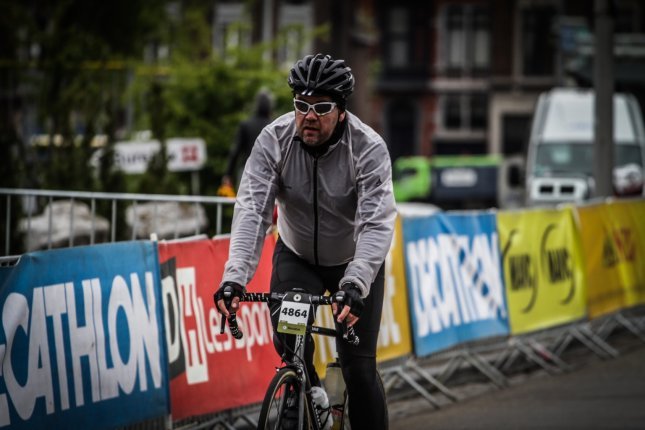
Christian at the finish line in Ans.
I have fulfilled a long-time dream of riding Liège-Bastogne-Liège and crossed it of my bucket list, but what comes next?

